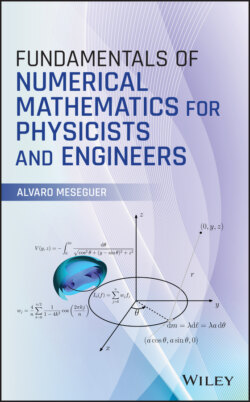Читать книгу Fundamentals of Numerical Mathematics for Physicists and Engineers - Alvaro Meseguer - Страница 25
Notes
Оглавление1 1 First obtained in the mid‐sixteenth century by the Italian mathematician Scipione del Ferro, inspired by the work of Lodovico Ferrari, a disciple of Gerolamo Cardano.
2 2 First derived by the German astronomer Johannes Kepler in 1609.
3 3 See Appendix H of Eisberg and Resnick (1985).
4 4 National Institute of Standards and Technology.
5 5 The etymology of the word is the name of the Persian mathematician and astronomer Al‐Khwārizmī‐ from the eighth century.
6 6 is said to be of Cauchy‐type if , such that .
7 7 Named after the English mathematicians Sir Isaac Newton (1642–1727) and Joseph Raphson (1648–1715).
8 8 This will be addressed in the second part of the book.
9 9 This approximation is crucial in Newton's method for systems of equations (Part II).
10 10 However, some texts consider the bisection method to be linearly convergent if one considers an upper bound of the error , so that .
11 11 The asymptotic constants of secant or chord methods have the same problem with double roots (see Exercises 1.3 and 1.4).
12 12 Also known as the false position method (see Exercise 1.6).
13 13 Edmond Halley, English astronomer who predicted in 1705 the orbital periodicity of the comet that now bears his name.
